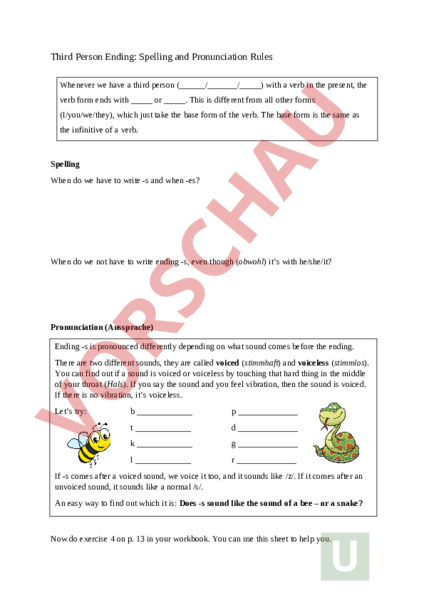Arbeitsblatt: Third Person -s_Spelling & Pronunciation
Material-Details
Theorieblatt zum Erlernen des Schriftbilds der 3. Person Singular im Präsens und zur Aussprache.
Englisch
Grammatik
klassenübergreifend
1 Seiten
Statistik
201714
477
0
10.04.2022
Autor/in
Céline Siegrist
Land: Schweiz
Registriert vor 2006
Textauszüge aus dem Inhalt:
Third Person Ending: Spelling and Pronunciation Rules Whenever we have third person (/_/_) with verb in the present, the verb form ends with or. This is different from all other forms (I/you/we/they), which just take the base form of the verb. The base form is the same as the infinitive of verb. Spelling When do we have to write -s and when -es? When do we not have to write ending -s, even though (obwohl) its with he/she/it? Pronunciation (Aussprache) Ending -s is pronounced differently depending on what sound comes before the ending. There are two different sounds, they are called voiced (stimmhaft) and voiceless (stimmlos). You can find out if sound is voiced or voiceless by touching that hard thing in the middle of your throat (Hals). If you say the sound and you feel vibration, then the sound is voiced. If there is no vibration, its voiceless. Lets try: If -s comes after voiced sound, we voice it too, and it sounds like /z/. If it comes after an unvoiced sound, it sounds like normal /s/. An easy way to find out which it is: Does -s sound like the sound of bee – or snake? Now do exercise 4 on p. 13 in your workbook. You can use this sheet to help you.
